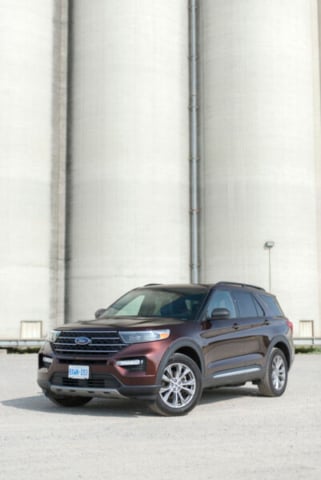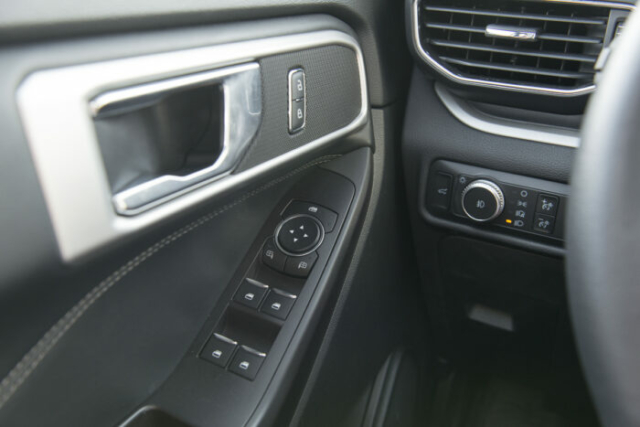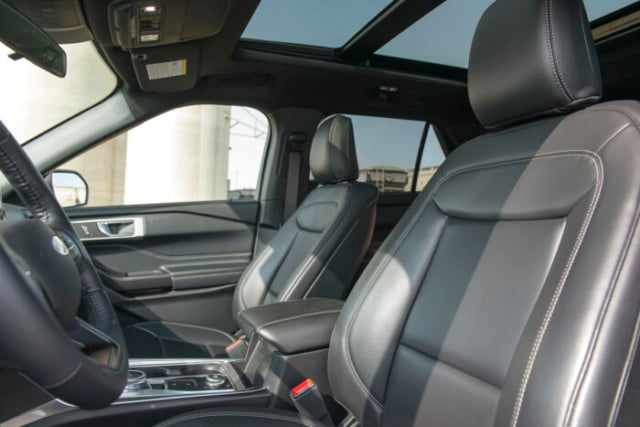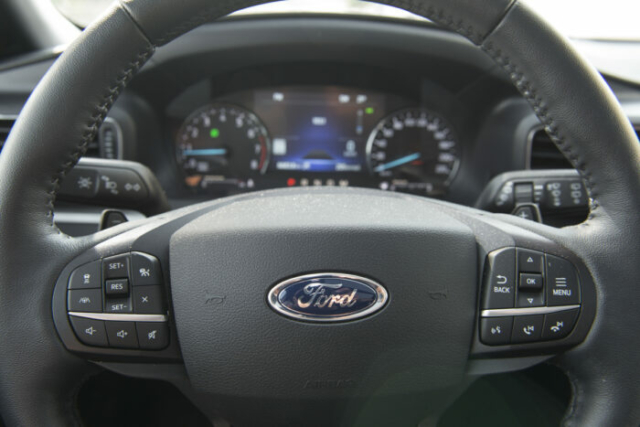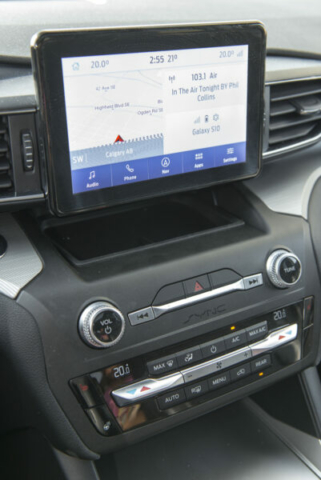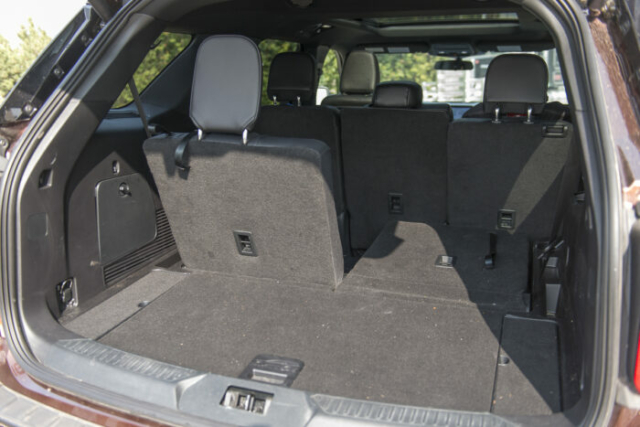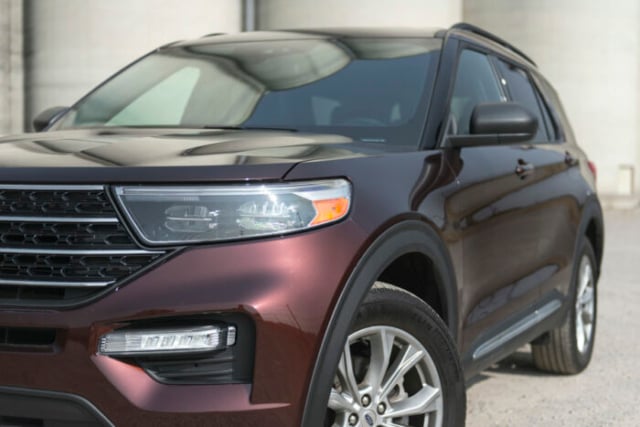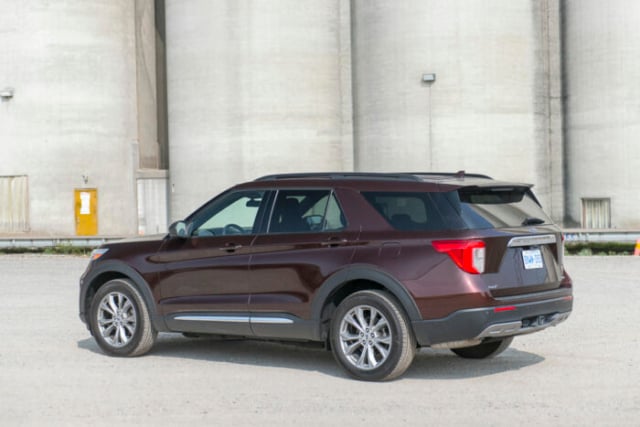Thirty years later, the Ford Explorer is still going strong and the entry-level 2020 XLT trim offers even more value for families shopping for a medium-sized SUV.
The long-running family hauler gains a complete redesign for 2020, entering its sixth generation while adding a new 400-hp ST model for parents who can’t seem to arrive at soccer practice on time. You can read the top 7 2020 Explorer updates here — from the leaner looks and new Terrain Management System to a redesigned interior with way more standard features.
Overall, that’s really where the Explorer XLT shines. It’s the second trim after the base Explorer (and the entry-level model in Canada), benefiting from all the big changes across the lineup without having to step up to the Limited, ST, or top-end Platinum models. Of course, there are buyers who want all the bells and whistles, but the XLT performs and handles significantly better than the outgoing model, which is a huge takeaway in this review.
New XLT Interior
Remember the days you’d have to fork out thousands of extra dollars for features that should’ve been standard? Automakers are finally adds these specs at no extra cost — sure the overall vehicle price is up but it’s still nice to know it’s ‘included.’ For 2020, the Explorer will offer more than a dozen new standard features over the 2019 model. This includes an 8-inch digital touch screen with SYNC3, and Wi-Fi service for up to 10 devices and more.
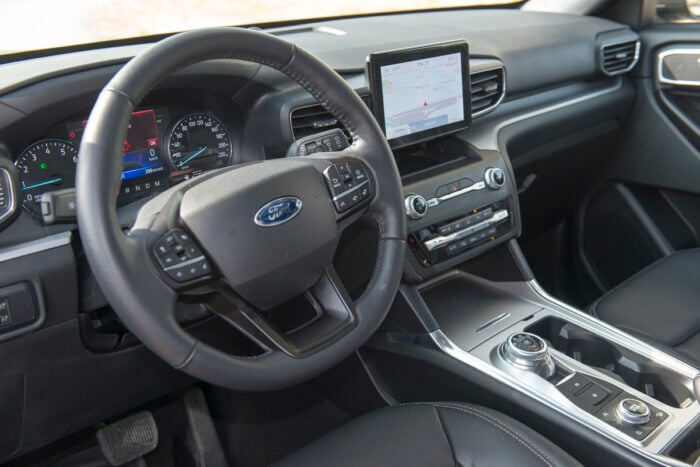
Huge improvements to the overhauled Explorer interior include the optional floating tablet-style 10.1-inch portrait-mounted touch screen with full-screen maps — we mention this first because it’s pretty obvious. The redesigned cabin is quieter than any previous generation and gains more space while adding more tech that buyers expect from new SUVs these days.
Here’s a look at some key XLT standard cabin features:
- Air Filtration System
- Tri-zone Electronic Automatic Temperature Control
- Rear Auxiliary Climate Control
- Dome/map lights in all three rows
- Rotary Gear Shift Dial
- Rear View camera with washer
- Reverse Sensing System
- FordPass Connect
- Dual Second Row Smart Charging USB ports
- FordPass Connect 4G LTE Wi-Fi hotspot
XLT options include remote start, a twin-panel moonroof, heated steering wheel, SYNC with voice-activated touchscreen navigation system, ActiveX seating material, and a 2nd-row 35/30/35 split-fold-flat bench seat.
XLT Performance & Handling: a 4WD SUV
With the exception of the ST and Platinum, propelled by a 3.0L EcoBoost, plus a new hybrid model with a 3.3L engine, the Explorer XLT finds a very capable 2.3L turbocharged I-4 EcoBoost paired to a new 10-speed transmission. The updated 2020 engine will produce a respectable 300 hp at 5,500 rpm and 310 lb-ft of torque at 3,500 rpm.
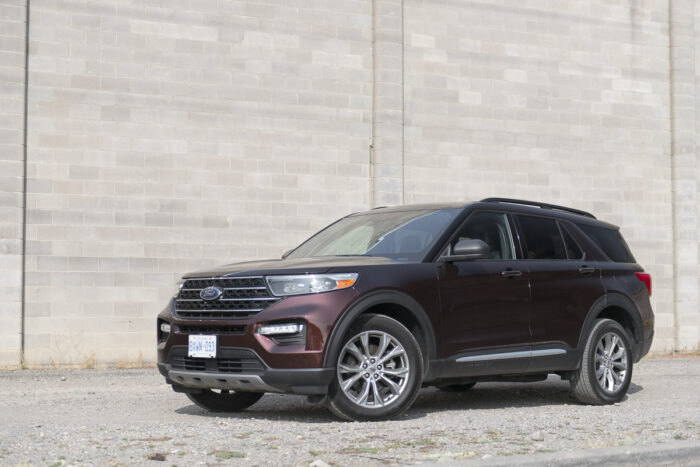
Again, the biggest separator with the new XLT is its on-road driving dynamics and sporty handling. The 10-speed auto with SelectShift shifts exceptionally quick and will go into speedy highway corners with ease and pull out with ample torque. A much leaner, sleek design also contributes to all this.
This was a surprisingly fun SUV to drive, and it’s clear Ford took the new Explorer’s handling seriously with the 2020 redesign. Even with the Explorer ST’s exhilarating drive etched into my mind, the XLT didn’t disappoint. A far cry from the ST’s 415 lb.-ft. of torque but still more than enough with the XLT’s 310 lb.-ft of torque at 3,500 rpm for most families.
The 2020 model overall is lighter and stronger, including a flexible new rear-wheel-drive architecture. All US Explorer XLT models come with rear-wheel drive and Intelligent 4WD as an upgrade — Canadians get this as standard (and equipped in this test review model). The Terrain Management System features seven selectable drive modes to fine-tune driving dynamics further.
Related – Ford’s 400-HP Explorer ST Gains RWD for 2022 and Extends Sporty Styling to the Lineup
2020 Ford Explorer XLT towing capacity
Ford says the 2.3L EcoBoost-powered Explorer XLT can tow up to 5,300 pounds when properly equipped; the higher trims with the 3.0L EcoBoost can pull up to 5,600, leading most competitors’ towing in the mid-size SUV segment.
Here’s a look at 2020 Explorer competitors’ rated towing capacities:
- Ford Explorer 5,600 lb (3.0L); 5,300 lb (2.3L XLT)
- Toyota Highlander 5,000 lb
- Honda Pilot 5,000 lb
- Nissan Pathfinder 6,000 lb
- Subaru Ascent 5,000 lb
- Kia Telluride 5,000 lb
- Hyundai Palisade 5,000 lb
- Chevrolet Traverse 5,000 lb
- Dodge Durango 8,700 lb
- Volkswagen Atlas 5,000 lb
- Mazda CX-9 3,500 lb
Takeaway: Is the 2020 Explorer XLT Worth It?
Arguably, the Explorer XLT is the best value of the bunch; it offers enough extra features over the entry-level Explorer (XLT is entry-level in Canada) such as first-row heated seats and second-row USB ports to justify the higher grade, without feeling pressure for the next-step-up Explorer Limited which gets some nice-to-haves like leather seating surfaces, a higher-grade 12-speaker B&O audio system, and roof rack side rails.
All three find the same 2.3L EcoBoost and nearly the same suite of Ford Co-Pilot360 Technology, to name a couple of features.
Ford’s major redesign of the new 2020 Explorer renders a much sportier handling SUV with more interior cargo space despite its newly acquired slender, aerodynamic look. The XLT benefits from all this, making it a great value for families looking for great cargo in a fun-to-drive package.
Exterior and interior 2020 Explorer XLT pictures:


